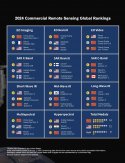You are using an out of date browser. It may not display this or other websites correctly.
You should upgrade or use an alternative browser.
You should upgrade or use an alternative browser.
China's Space Program Thread II
- Thread starter Blitzo
- Start date
by78
General
An on China's effort to build a space-based solar power station and power distribution network. First, China plans to launch two verification satellites in 2024 to test technologies for a "space power grid", which will wirelessly transmit energy generated by a space solar power station to nearby satellites, forming a power grid in space. Next, China plans to achieve wireless power transmission from orbit to space sometime between 2028 and 2030.
Images below are from an earlier posts (1, 2, 3)
An on the ground-based technology demonstrator for space-based solar power station (SSPS) and power distribution network system.
Abstract: This study systematically introduces the development of the world’s first full-link and full-system ground demonstration and verification system for the OMEGA space solar power satellite (SSPS). First, the OMEGA 2.0 innovation design was proposed. Second, field-coupling theoretical models of sunlight concentration, photoelectric conversion, and transmitting antennas were established, and a systematic optimization design method was proposed. Third, a beam waveform optimization methodology considering both a high beam collection efficiency and a circular stepped beam shape was proposed. Fourth, a control strategy was developed to control the condenser pointing toward the sun while maintaining the transmitting antenna toward the rectenna. Fifth, a high-efficiency heat radiator design method based on bionics and topology optimization was proposed. Sixth, a method for improving the rectenna array’s reception, rectification, and direct current (DC) power synthesis efficiencies is presented. Seventh, high-precision measurement technology for high-accuracy beam-pointing control was developed. Eighth, a smart mechanical structure was designed and developed. Finally, the developed SSPS ground demonstration and verification system has the capacity for sun tracking, a high concentration ratio, photoelectric conversion, microwave conversion and emission, microwave reception, and rectification, and thus satisfactory results were obtained.








I am sure they have in design, but maybe not mounted in this demo. The lights could be already mounted on the two corners of the backpack, just not shown. The suit is modular, things can be attached for different purpose.Why it doesn't seem to have search lights?
US suit and their previous Feitian suit have search lights.
View attachment 136709
2nd gen Feitian without camera, the lights are mounted on the side of the helmet.

2nd gen Feitian with cameras mounted above the helmet.

Is it just me or the US suit seems to be more bulky/heavy compared to Chinese suit?
The woman on US suit has to be helped and use stick to squat and kneel while the Chinese one doesn't have to be helped.
Do you count SpaceX's suit as “US suit” ?

Are they gonna go out into a vacuum without oxygen tanks?Do you count SpaceX's suit as “US suit” ?

Are they gonna go out into a vacuum without oxygen tanks?
Well, they already performed EVA with this suit
No life support systems on the suit, likely less protective in general.Well, they already performed EVA with this suit





